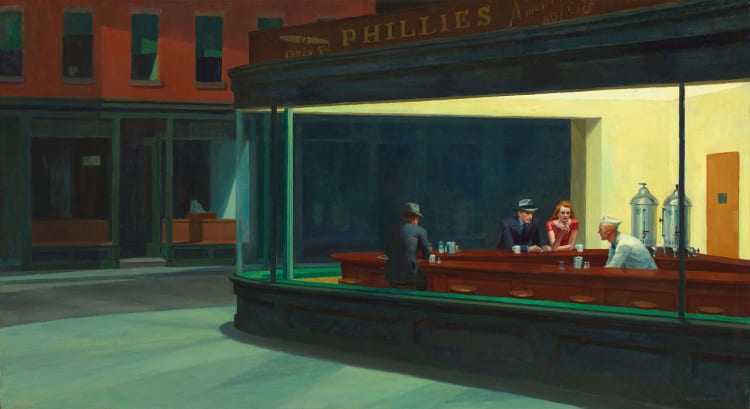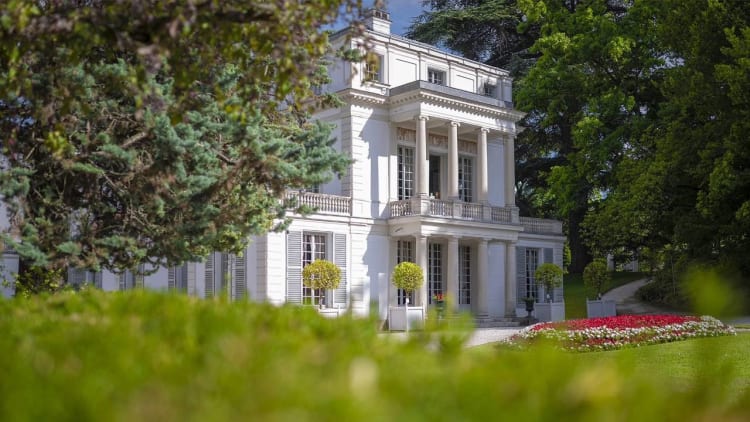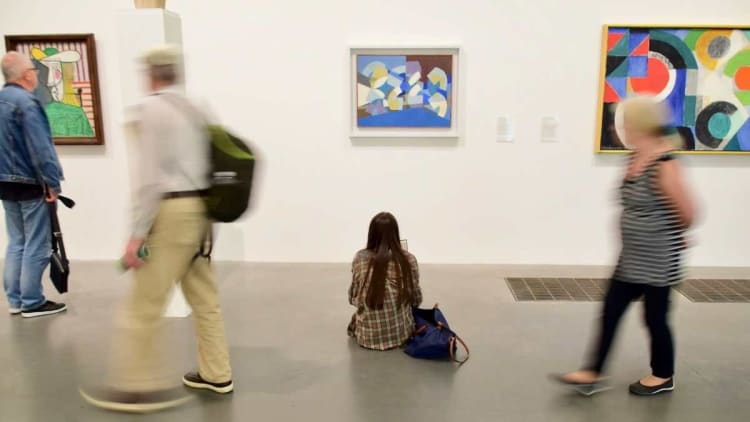The American painter Edward Hopper (1882-1967) provided a precious testimony of the American Way of Life in the 20th century. He is one of the pillars of American realism, his painting expresses a certain nostalgia in a changing America where nature opposes an increasingly modern and industrialized world.
Let's discover together 10 important things to know about Edward Hopper.

1 - He spent most of his life in New York
Edward Hopper was born on July 22, 1882 in Nyack, New York. Edward Hopper spent most of his life in New York.
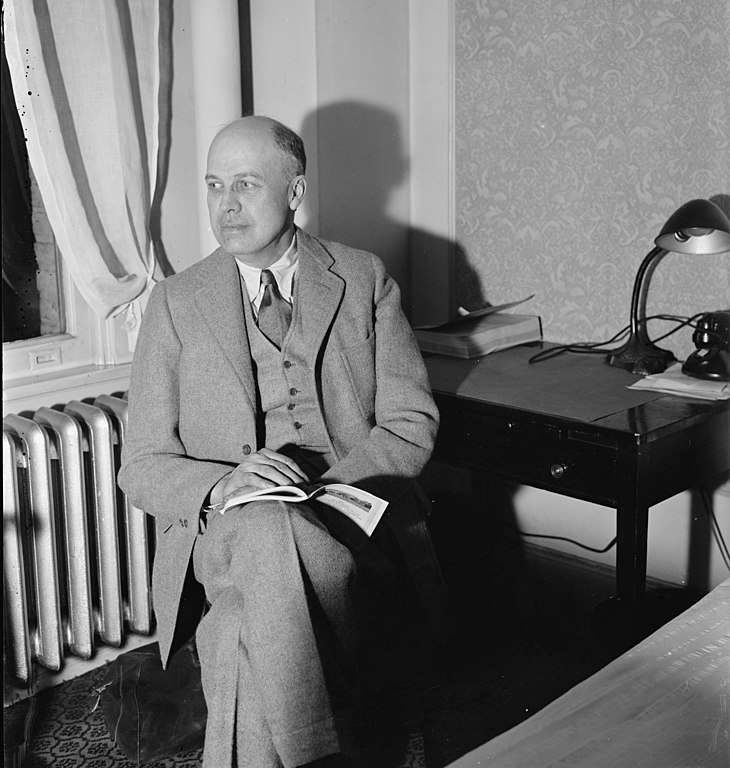
Edward Hopper in New York in 1937, photo by Harris & Ewing
He studied illustration at the New York School of Illustration. In 1900, he continued his studies at the New York School of Art.
After his education, Hopper traveled around Europe for a few years and chose to set up his studio in New York in 1908.
Also read: 8 things to know about Mark Rothko
2 - He loved France deeply
Between 1906 and 1910, the American painter made three trips to Paris. He also took advantage of this time to travel around Europe and immerse himself in the works of the great masters in the collections of European museums.

Le Pont des Arts, Edward Hopper, 1907, Whitney Museum of Art, New York
In Paris, he met other American artists and began to develop an interest in photography with Eugène Atget.
He fell under the spell of French culture and remained a Francophile until his last breath.
Upon his return to America, he continued to write in French and read books written in French.
3 - He sold his first work at the age of 31
At first, Edward Hopper worked as an illustrator in advertising, a profession that he did not cherish, but which allowed him to live.
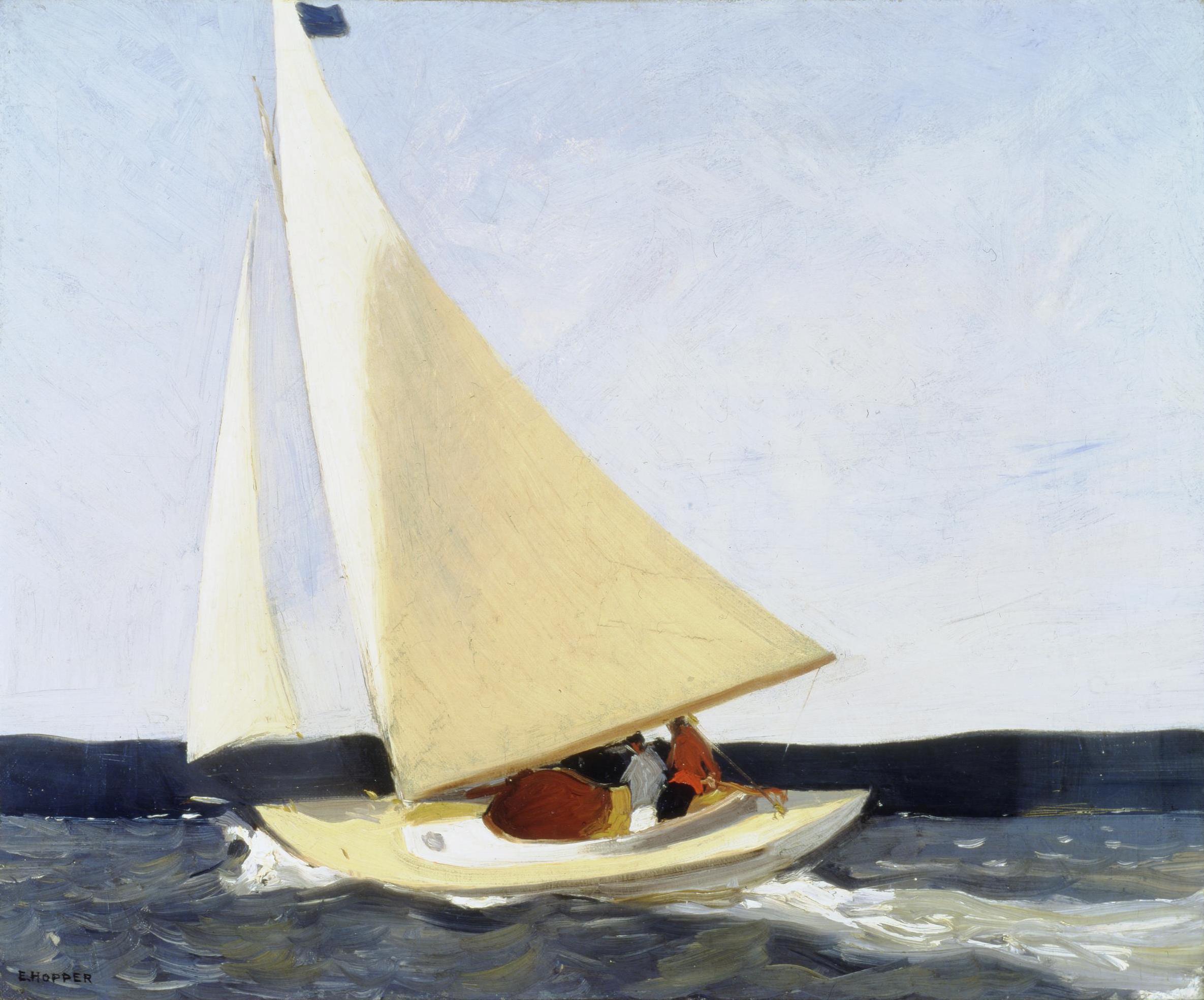
Sailing, Edward Hopper, 1911, Carnegie Institute Museum of Art, Pittsburgh
At this point in his life, he painted mainly in the summer and participated in a few group exhibitions between 1908 and 1912.
In 1913, at the age of 31, he sold his first work Sailing and moved to a studio in Washington Square.
Also read: 7 things to know about Amedeo Modigliani
4 - Jo Hopper, his wife, was very talented but she was forgotten
In 1924, Edward Hopper married Josephine Verstille Nivison whom he called "Jo".
She was also a painter and played an important role in her husband's artistic success despite their tumultuous relationship.

Landscape, Josephine Hopper
Today, museums and the art market are far from honouring Jo Hopper's works, which have almost all disappeared.
This is a great injustice considering the quality of her painting, but Jo Hopper seemed to be prepared for it: "Of course. If there can only be space for one of us, it will undoubtedly be for him."
5 - In the 1930s, the great American museums consecrate him
In 1925, Edward Hopper completed his famous oil on canvas painting House by the Railroad.
In 1930, the Museum of Modern Art bought this painting which is often considered his best.

House by the Railroad, Edward Hopper, 1925, MoMA, New York
The Whitney Museum of American Art acquired a 1930 painting entitled Early Sunday Morning.
In 1933, the MoMa in New York organized the first retrospective on the work of Edward Hopper.
Also read: 10 things to know about David Hockney
6 - He bought a property on Cape Cod
In 1933, the Hopper couple bought a piece of land on Cape Cod in Massachusetts.

Cape Cod Morning, Edward Hopper, 1950, oil on canvas, Smithsonian American Art
The couple built a house and set up a studio there. Some very beautiful works were painted in this place.
7 - Edward Hopper was fascinated by the American landscape
The New York painter paid particular attention to the representation of rural landscapes located mainly in the northeastern United States.
He painted landscapes, lighthouses or gas stations located in remote areas.
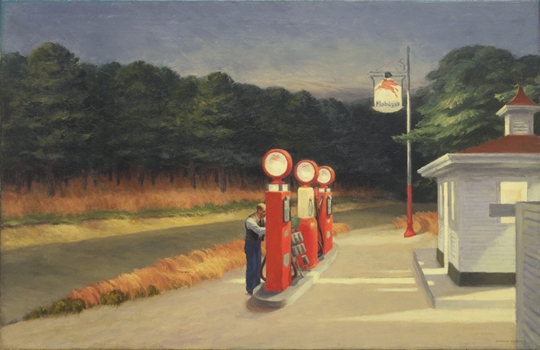
Gas, Edward Hopper, 1940, MoMA, New York
Hopper's landscapes are deserted by men and often crossed by a road or a railroad.
These separations evoke the ideas of time passing, travel and mark a separation between nature and civilization.
Also read: 10 things to know about Frida Kahlo
8 - But also by urban areas and architecture
Since his time in Paris, Hopper drew sketches of buildings.
In his paintings, buildings can even be the main subjects treated at different times of the day, a nod to the impressionist legacy.
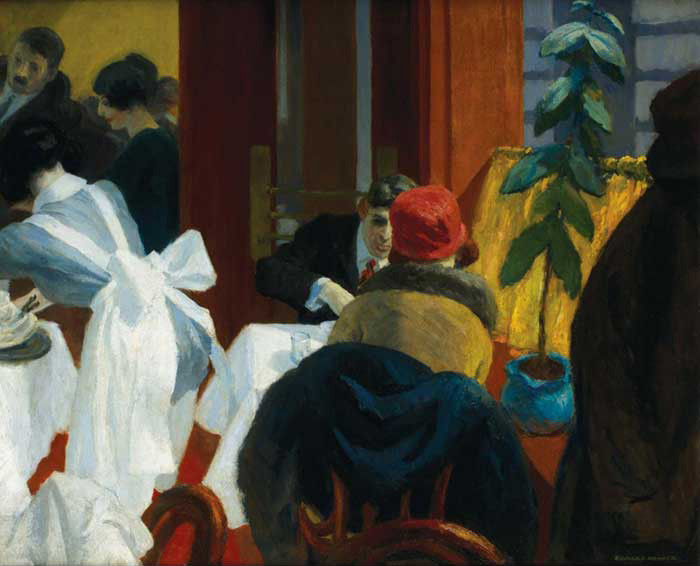
The Restaurant in New York, Edward Hopper, 1922, Muskegon Museum of Art
In his cityscapes, Hopper shows us places of passage, work, leisure and meeting. He bears witness to a modern America and a flourishing service economy.
9 - Edward Hopper, painter of solitude and melancholy
His works reflect the daily life of Americans. In his famous Nighthawks (1942), Hopper shows lonely customers sitting at the counter, the neon light contrasting with the rest of the painting which is plunged into darkness.
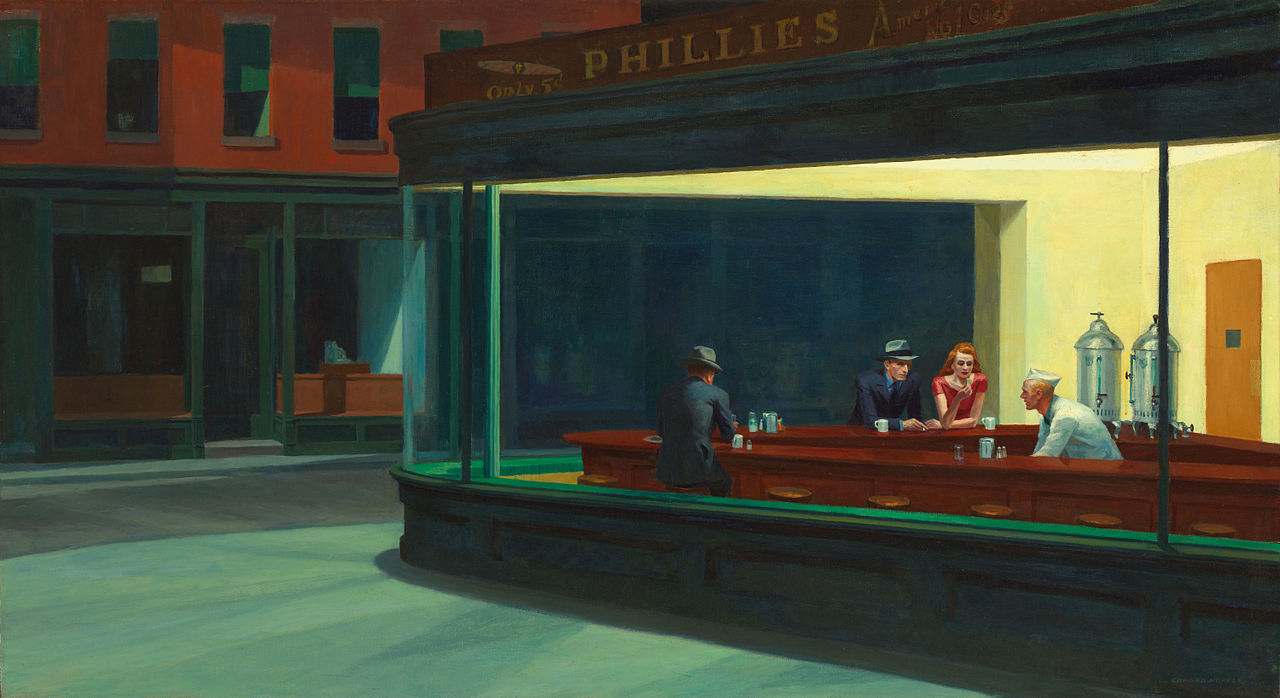
Nighthawks, Edward Hopper, 1942, Art Institute of Chicago
The painter shows us the loneliness with which the inhabitants of the big American cities are confronted.
Hopper's painting is charged with melancholy, the characters seem silent and their faces do not transmit any emotion, perhaps a consequence of his partial deafness?
10 - Alfred Hitchcock was inspired by the art of Edward Hopper
For the film Psycho (1960), the filmmaker used the painting House by the Railroad (1925). This painting served as a model for the house in his film.
Alfred Hitchcock in front of the house of the film Psycho
Great directors have also paid tribute to Hopper's paintings: George Stevens, Tim Burton, Alan Rudolph, Peter Greenaway, Warren Beatty, the Coen brothers, Woody Allen, Dario Argento...

